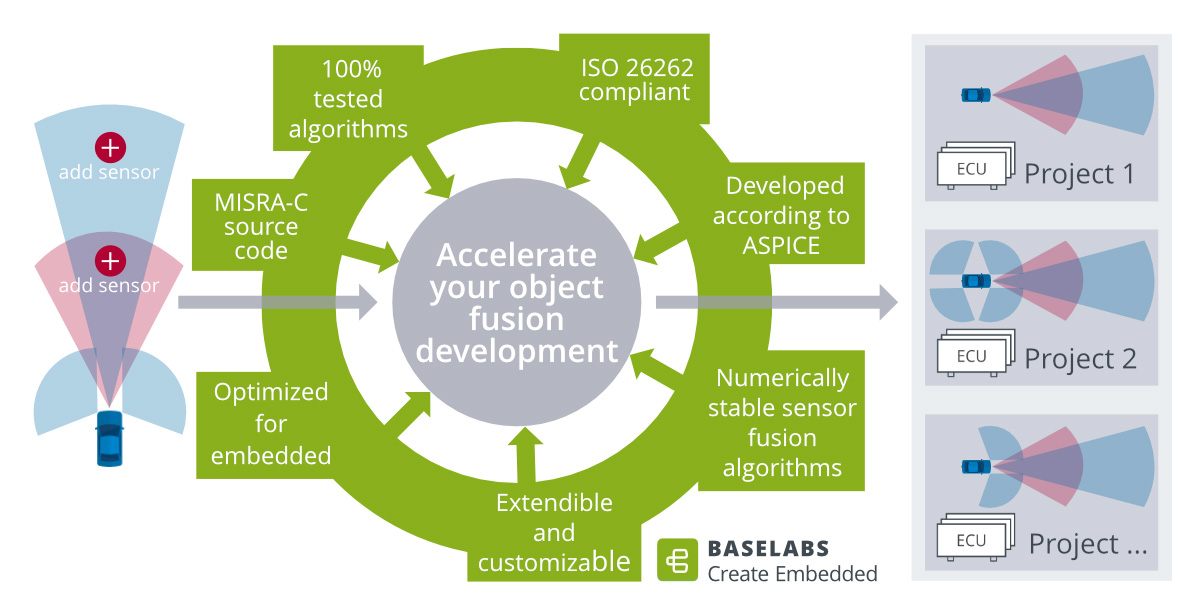BASELABS and Vector sign agreement for ADAS software
Vector has distributed the software BASELABS Create Embedded from the Chemnitz-based developer of sensor fusion internationally as part of its ADAS product portfolio. Both companies signed a cooperation agreement for this purpose in January 2021. The two software companies have already been collaborating since 2014 with the goal of creating a joint offering for the development of driver assistance systems and automated driving.
For the first time, the ISO 26262-certified software library BASELABS Create Embedded enables the generation of individual sensor fusion algorithms and AUTOSAR software components for safety-compliant use in series production vehicles.
"The cooperation agreement with our long-term strategic partner Vector is another important milestone to make our sensor fusion software library more available to international automotive companies. With the joint offering of Vector and BASELABS, our customers will be able to implement their complex ADAS systems for series vehicles more easily, quickly as well as flexibly and better adapt to changing market and customer requirements," said Dr Robin Schubert, Managing Director of BASELABS.
"This cooperation is an additional element of Vector's strategy to expand the portfolio of basic software components for our customers," added Dr Thomas Beck, Managing Director at Vector.
BASELABS Create Embedded contains, in addition to a reference architecture, powerful fusion algorithms that reliably combine data from radar, camera and lidar sensors. The sensor fusion algorithms generated with the software can be executed directly on embedded devices and ECUs with the Vector AUTOSAR Basic Software, MICROSAR, in the target vehicle.
Developers of ADAS ECUs individually customise object fusion systems with BASELABS Create Embedded. The library's generated MISRA-C source code is fully accessible and optimised for execution on embedded platforms. The software allows sensor fusion systems to be quickly and efficiently configured and customised for different ADAS functions, sensor combinations, or design domains. As a result, sensor fusion development is significantly less time-consuming and resource-intensive. Users can then concentrate entirely on the development and optimisation of the overall system and the actual driving functions.






